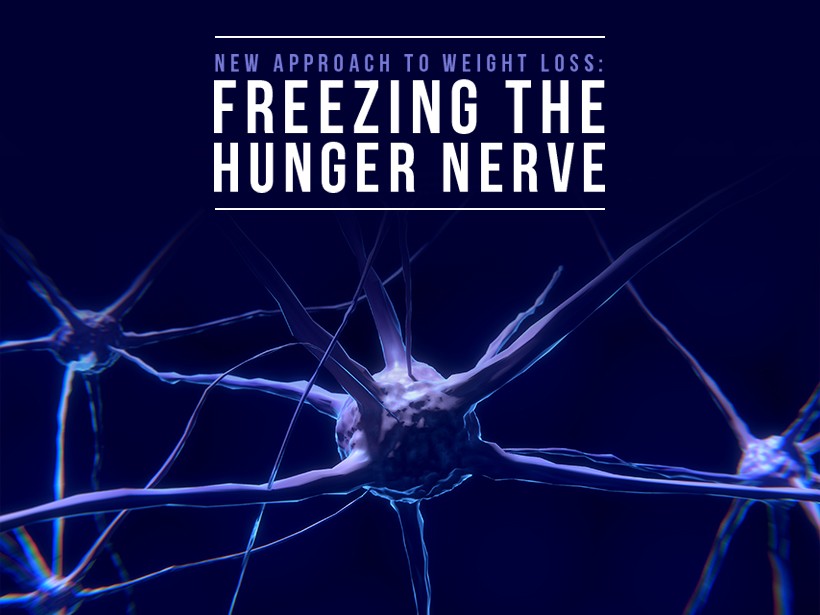What often throws a wrench in our diet plans isn’t our lack of knowledge per se, or the fact that we don’t want to eat healthy foods. The culprit? Our ferocious appetites! Hunger makes us eat too much, eat more often, and makes us eat things we shouldn’t.
Many Americans pull out all the stops in an attempt to lose weight. They go on diets such as Atkins, Mediterranean, or keto. They join gyms and implement exercise routines. They start weight loss programs like Weight Watchers. They even undergo gastric bypass surgeries. And now there’s a new treatment out there that can help silence hunger pains for good.
Responsible for Hunger Pains: The Vagus Nerve
There is a nerve located at the base of the esophagus that interfaces with the heart, lungs, and digestive tract. It’s responsible for heart rate, moving food through the stomach, sweating, muscle control in the mouth, and gag reflex. The vagus nerve also notifies the brain when the stomach is empty. Due to this, doctors have begun calling it “the hunger nerve.”
Historically, doctors performed a procedure called a vagotomy on patients to help cure peptic ulcer disease, but this has since fallen out of favor as less invasive treatments, such as the use of antibiotics, became more common. Now, doctors recognize another use for the vagus nerve: if they freeze it to the point of numbness, they can help their patients curb their hunger and help them lose weight.
The New Weight Loss Procedure
A doctor inserts a needle-like instrument into the patient’s back by using a computed tomography (CT) scan to ensure accuracy of placement. They then release argon gas into the nerve, which cools it to sub-zero temperatures, paralyzing it. The brain will no longer get the message that the patient is craving a big ol’ heap of mac n’ cheese.
A benefit to this procedure – other than the reduction of hunger pains – is that freezing the nerve helps food move slower through the stomach, helping the patient feel fuller longer. The results? Patients who have undergone this procedure see a 14 percent reduction in excess body weight within 90 days of the procedure.
Risks and Implications of the Procedure
Those who have undergone this procedure (called a vagotomy) are at risk for serious Vitamin B deficiencies later in life. Freezing the vagus nerve inhibits the stomach from being able to absorb Vitamin E, which can lead to serious complications such as nerve damage, dementia, paranoia, and fatigue.1
Despite the risks, the procedure may benefit patients who have tried everything else in the way of weight loss to no avail. Talk to your doctor about the procedure and other options you may have if you’re trying to shed some pesky pounds.
NUTRITIONAL DISCLAIMER
The content on this website should not be taken as medical advice and you should ALWAYS consult with your doctor before starting any diet or exercise program. We provide nutritional data for our recipes as a courtesy to our readers. We use Total Keto Diet app software to calculate the nutrition and we remove fiber and sugar alcohols, like erythritol, from the total carbohydrate count to get to the net carb count, as they do not affect your blood glucose levels. You should independently calculate nutritional information on your own and not rely on our data. The website or content herein is not intended to cure, prevent, diagnose or treat any disease. This website shall not be liable for adverse reactions or any other outcome resulting from the use of recipes or recommendations on the Website or actions you take as a result. Any action you take is strictly at your own risk.
- Love Good Fats Secures Funding and Launches in the U.S. - April 5, 2019
- Food and Beverage Manufacturers Cut Sugar Quickly - August 15, 2018
- Are Low-Carb Desserts the Next Big Thing? - July 12, 2018































